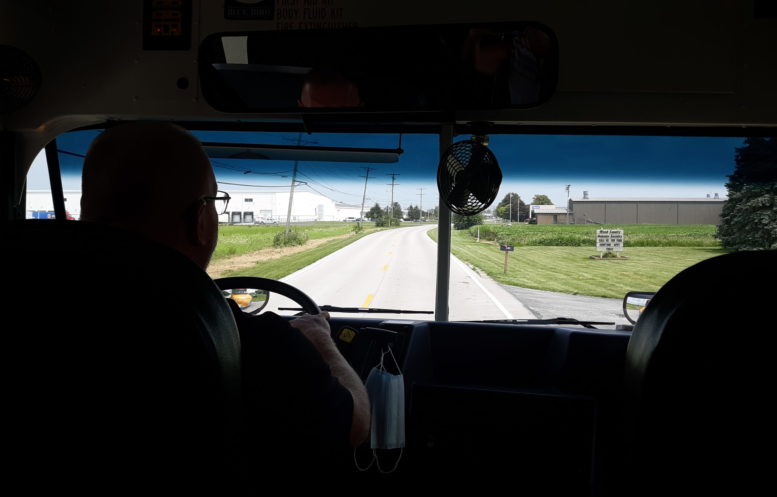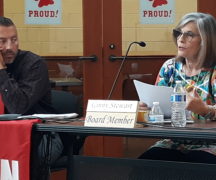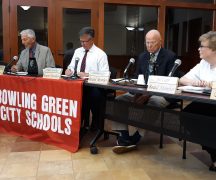By JAN LARSON McLAUGHLIN
BG Independent News
Thomas Wolf is worried about his young son having to walk nearly two miles to his elementary school in Bowling Green.
Wolf, who lives in the 1000 block of North Main Street, voiced his concerns to the Bowling Green Board of Education Tuesday evening after learning that the district planned to limit bus service to students two miles or more from their schools. Wolf explained that he starts work at 5:30 every morning, so his son’s only option will be to walk to school.
“I’d be nervous about something happening to him,” Wolf said.
If the district can’t provide busing, can it provide police patrols or crossing guards at the three major roads his son would have to cross daily, he asked.
After limping along last year with too few bus drivers and regular route cancellations, the school board voted Tuesday evening to offer busing to students more than two miles from their schools – rather than one mile.
That means the number of students eligible for bus transportation will be cut in half – from 2,122 to 1,024, according to district transportation director Toby Snow.
Board member Tracy Hovest asked that the board hire more crossing guards, and partner with the city to help with increased traffic flow at the schools as more parents transport their students.
“My daughter will have to walk, too,” Hovest told Wolf.

Board member Norm Geer expressed concern about the change. “Our families have relied on the one-mile,” he said, asking if the district needs to pay more.
The problem isn’t the pay, Snow said, with Bowling Green drivers getting top pay of $19.85 an hour, which is the average for this area.
Geer asked if higher wages might convince some people to come out of retirement to drive a bus. Snow said that’s unlikely, since districts offering $23 an hour still can’t find enough drivers.
Bowling Green is not alone, with many school districts in the state and nation struggling to fill the drivers’ seats.
For the last half of the school year, Bowling Green was forced to cancel two bus routes each day. Even using the district’s mechanics, courier, transportation director and secretary to drive routes, the district is still down four drivers, Snow said.
By limiting bus transportation to students two miles or more from schools, the district can cut its bus routes from 20 to 14. Even at that, that district will still be three drivers short, Snow said.
“We need to do this to stay in compliance,” he told the board, explaining that the district is required to provide bus transportation to students more than two miles from school.
The hope is that the district can return to the one-mile radius routes once it gets more drivers, Snow said.
“The driver shortage issue is shared by most districts,” Superintendent Francis Scruci said. The state has changed its requirements to attract more drivers, and the district recently increased pay by $3 an hour.
“He’s tried everything in his power, but to no avail,” Scruci said of Snow.
Scruci voiced his appreciation of families being flexible in getting their children to and from school last year, but the district can’t keep canceling routes. Student attendance was impacted negatively, and the district is required to meet the needs of those students two miles or more from school.
“We can’t continue that long term,” he said.
One family reportedly filed a complaint with the Ohio Department of Education in May over the route cancellations. A penalty could mean the loss of funding to the district, Scruci said.
“There’s not an easy solution to this,” he said. “If we don’t have people driving, buses don’t run.”
And there is no quick solution, since applicants must complete four to six months of training, Snow said.
The job is just tough, board member Ginny Stewart said.
“It is not for the weak,” she said. “This is not a rash decision. They have spent a year trying to solve the problem.”
Stewart suggested that some parents might consider setting up carpooling schedules in their neighborhoods. “I don’t mean to be flip about this,” she said, but it could provide some temporary relief to parents finding themselves responsible for their children’s transportation to and from school.





